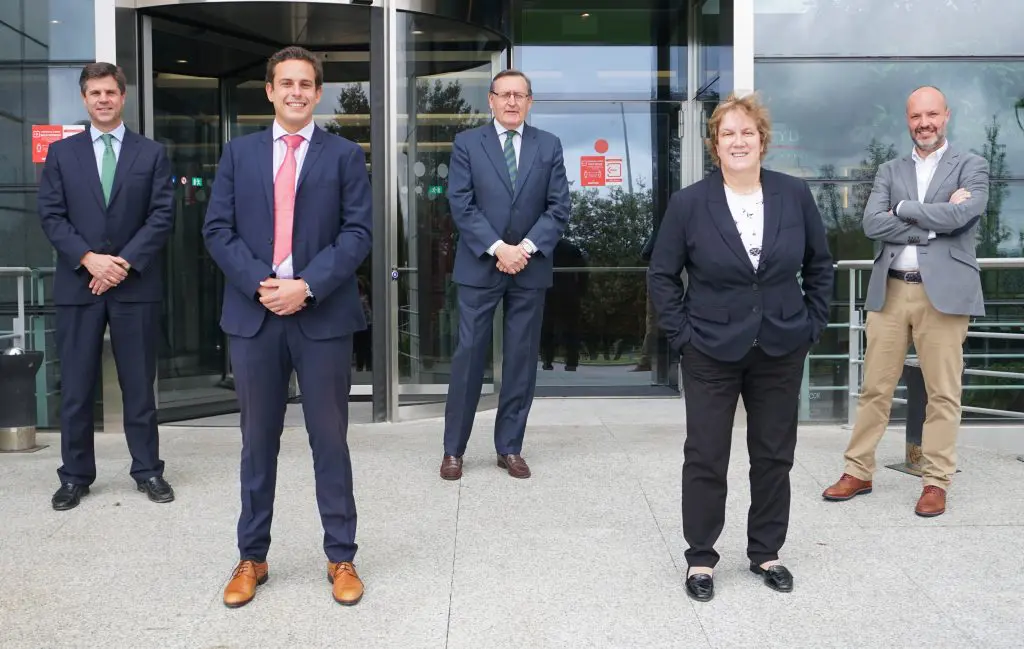From the dangers of charging batteries to the importance of change management: The Top 5 industrial risks

 In a recent webinar presented by Eduardo García Mozos, Head of Engineering of the Business Unit, five experts used case studies to highlight the fundamental basis of risk management: to optimize the probability/impact binomial. They also provided crucial insights for controlling risk, preventing incidents and minimizing the potential consequences of the most frequently occurring instances.
In a recent webinar presented by Eduardo García Mozos, Head of Engineering of the Business Unit, five experts used case studies to highlight the fundamental basis of risk management: to optimize the probability/impact binomial. They also provided crucial insights for controlling risk, preventing incidents and minimizing the potential consequences of the most frequently occurring instances.
 MAPFRE Global Risks Engineer, Alberto Romera, explained the dangers of the battery charging process, which are particularly recurrent in power backup facilities or facilities with electric forklifts. The potential risk stems from the generation of hydrogen. This could give rise to an explosive atmosphere, which, in the presence of an electrical spark, would lead to a fire.
MAPFRE Global Risks Engineer, Alberto Romera, explained the dangers of the battery charging process, which are particularly recurrent in power backup facilities or facilities with electric forklifts. The potential risk stems from the generation of hydrogen. This could give rise to an explosive atmosphere, which, in the presence of an electrical spark, would lead to a fire.The expert recommends paying particular attention to the location of loading areas, as well as contact with certain materials inside combustible buildings and proximity to machinery critical to industrial processes.
How? Romera suggests charging batteries safely, ensuring that areas are well-ventilated, maintaining a safe distance from risks posed by others and, where possible, separating areas with fire-resistant partitions in order to mitigate the risks. The insurer’s approach is to go beyond regulatory requirements in terms of maintenance and safety.
 Secondly, mechanical engineer Germán Martínez mentioned the implementation of hot work permits, in the case of cutting, welding or use of a naked flame. Anomalies detected during inspections mainly concern the lack of knowledge about requiring a work permit to carry out these types of processes and the lack of adequate fire prevention measures, among other aspects. The aim is always to prevent human and material losses.
Secondly, mechanical engineer Germán Martínez mentioned the implementation of hot work permits, in the case of cutting, welding or use of a naked flame. Anomalies detected during inspections mainly concern the lack of knowledge about requiring a work permit to carry out these types of processes and the lack of adequate fire prevention measures, among other aspects. The aim is always to prevent human and material losses.A fire in a meat production plant, which put the entire plant at risk, was analyzed during the webinar. The expert stressed that a hot work permit is necessary in all facilities where work cannot be carried out in a suitable and permanently designated area. He also emphasized that hazardous areas (with an explosive atmosphere) should be avoided, combustible materials removed and vulnerable areas protected.
If hot work is to be carried out in a certain area, it is important to check that said area is not hazardous. Failing that, a permit should be implemented, for which it is recommended that procedures be put in place to ensure exclusive protocols for the activity, training for the company’s own or contracted personnel, supervision of the work, permits and safety measures and the adoption of the minimum requirements within eleven meters from where the activity is being carried out (orderliness, ventilation, fire extinguishers and guards).
 For his part, Fire Protection Engineer, Joaquín Lorao, referred to the firefighting water supply (FWS): a critical system for “the firefighting equipment that remains dormant unless needed, where there is no margin of error.” According to the expert, this is similar to the heart for the human body, in that it must not fail. In terms of items that must be protected, he referenced technical and start-up documentation, the basis for future inspections, as well as tests, maintenance and self-checks, all of which are paramount.
For his part, Fire Protection Engineer, Joaquín Lorao, referred to the firefighting water supply (FWS): a critical system for “the firefighting equipment that remains dormant unless needed, where there is no margin of error.” According to the expert, this is similar to the heart for the human body, in that it must not fail. In terms of items that must be protected, he referenced technical and start-up documentation, the basis for future inspections, as well as tests, maintenance and self-checks, all of which are paramount.It is vital to check the tank’s water level, the position of the valves and automatic pumps, the correct ambient conditions, the absence of humidity and temperature above 4°C (39°F), that there are no warning signals, no leaks and correct pump-motor alignment, among other things. As always, it is important to analyze the area, ensuring that the elements involved in extinguishing a fire cannot become waterlogged in the event of torrential rainfall.
Lorao drew attention to the importance of prior documentation, a planned review program, verifying compliance with national and international standards, issuing reports (detailed and recorded) and recommendations and implementing improvements.
He also stressed the importance of checking the condition of fire pumps, checking the pump curve to ensure the correct functioning of the water supply system.
Change management and security systems
 Eduardo Sánchez, an industrial engineer specializing in electronics, talked about change management with a focus on preventing new hazards or increased risk from existing hazards as a result of amendments, changes or modifications in a plant or building, in a technology or process or at the staff or organizational level.
Eduardo Sánchez, an industrial engineer specializing in electronics, talked about change management with a focus on preventing new hazards or increased risk from existing hazards as a result of amendments, changes or modifications in a plant or building, in a technology or process or at the staff or organizational level.It is important to control change through guarantees, depending on whether it involves a simple replacement, or whether it is a temporary, permanent or emergency change, which involves applying the corresponding management procedure(s). Industries such as oil & gas, chemicals and petrochemicals are more critical, he says, but “this is essential” for all activities.
The expert analyzed a specific case in which this was not properly applied at a detergent alkylates plant in the US, involving a change in chemical catalyst, sludge clogging, a poorly designed solution that resulted in additional hazards, a shift change and poor communication.
In the recommendations chapter, he referred to change identification, risk analysis, change authorization and implementation and review before, during and after operation. Successfully implementing all of this depends, in his opinion, on levers such as process ownership, document management, a multidisciplinary team and the creation of a scorecard with indicators.
 Finally, María Teresa Queralt, Engineering Manager at MGR, discussed the decommissioning, deactivation or downtime of Fire Protection Systems (FPS) due to works, breakdowns, modification or maintenance. An additional factor is correct operation, which must be verified through a self-inspection.
Finally, María Teresa Queralt, Engineering Manager at MGR, discussed the decommissioning, deactivation or downtime of Fire Protection Systems (FPS) due to works, breakdowns, modification or maintenance. An additional factor is correct operation, which must be verified through a self-inspection.She highlighted the importance of the decommissioning procedure, which concerns the first cases and, above all, the adoption of alternative safety measures to prevent a small fire or outbreak from leading to a major fire or catastrophe where these are not in place.
As for her recommendation when it comes to the decommissioning of fire protection equipment, she provided a permit protocol and pointed out that this must be commensurate with the type of systems involved and the equipment impacted, and also with the length of the downtime, the creation of action plans for any plant or machinery left without protection, preventive and additional measures in place, as well as allocating responsibilities for procedures, and communication.

